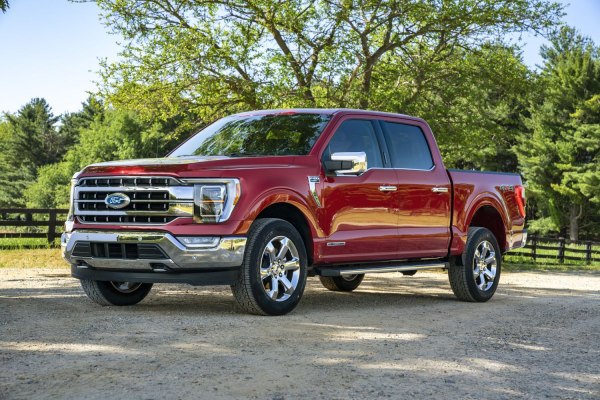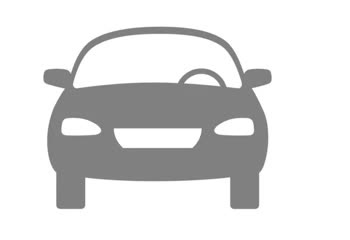Everything you need to know about specifications and performance - Ford F-Series F-100/F-150 2020 - 3.5 PowerBoost V6 (430 Hp) FHEV Automatic

Overview:
What is the engine capacity of a Ford F-Series F-100/F-150 2020?
The engine capacity of the Ford F-Series F-100/F-150 2020 is 3497.
How powerful is the electrical system in the Ford F-Series F-100/F-150 2020?
The power of the electrical system in the Ford F-Series F-100/F-150 2020 is 430 Hp @ 6000 rpm. hp.
How much gasoline does a Ford F-Series F-100/F-150 2020 consume?
The Ford F-Series F-100/F-150 2020 consumes 9.4 liters of gasoline per 100 km
General:
Brand: Ford
Model: F-Series F-100/F-150
Generation: F-Series F-150 XIV SuperCrew
Modification (Engine): 3.5 PowerBoost V6 (430 Hp) FHEV Automatic
Start of production: October, 2020
End of production: 2023
Powertrain Architecture: FHEV (Full Hybrid Electric Vehicle)
Body type:Pickup
Seats: 5-6
Doors: 4
Engine:
Engine systems: Start & Stop System
Engine displacement: 3497
Number of cylinders: 6
Engine configuration: V-engine
Fuel injection system: Direct injection and Multi-port manifold injection
Engine aspiration: Twin-Turbo, Intercooler
Engine oil capacity: 5.7 l
Coolant: 14.5 l
Engine layout: Front, Longitudinal
Cylinder Bore: 92.46 mm
Piston Stroke: 86.61 mm
Compression ratio: 10.5:1
Performance:
Fuel Type: Petrol (Gasoline)
Fuel consumption (economy) - urban: 9.4 l/100 km
Fuel consumption (economy) - extra urban: 9 l/100 km
Fuel consumption (economy) - combined: 9.4 l/100 km
Weight-to-power ratio: 5.5 kg/Hp, 181.4 Hp/tonne
Weight-to-torque ratio: 3.1 kg/Nm, 326 Nm/tonne
Electric system:
Gross battery capacity: 1.5 kWh
Battery technology: Lithium-ion (Li-Ion)
Battery location: Below the floor
System power: 430 hp @ 6000 rpm.
System torque: 773 nm @ 3000 rpm.
Electric motor power: 48 hp
Electric motor location: Between the combustion Engine and the transmission
Space:
Kerb Weight (kg): 2371-2386
Max. weight (kg): 3334
Max load (kg): 948-963
Trunk (boot) space - minimum: 1495-1764 l
Permitted trailer load with brakes (12%): 5761 kg
Fuel tank capacity: 116 l
dimensions:
Ramp-over (brakeover) angle: 16.6-17.6°
Length: 5885-6185 mm
Width: 2029 mm
Height: 1920-1925 mm
wheelbase: 3693-3993 mm
Width with mirrors folded: 2123 mm
Width including mirrors: 2431 mm
Front track: 1725 mm
Rear (Back) track: 1735 mm
Front overhang: 955 mm
Rear overhang: 1234 mm
Ride height (ground clearance): 208-216 mm
Minimum turning circle (turning diameter): 14.6-15.6 m
Approach angle: 21-21.8°
Departure angle: 22.9-23.9°
Powertrain, Suspension and Brakes:
Drivetrain Architecture: The Internal combustion Engine (ICE) and electric motor drive the rear wheels of the car with the ability to work in full electric or mixed mode.
Drive wheel: Rear wheel drive
Number of gears and type of gearbox: 10 gears, automatic transmission
Front brakes: Ventilated discs, 350x34 mm
Rear brakes: Ventilated discs, 336x20 mm
Assisting systems: ABS (Anti-lock braking system)
Steering type: Steering rack and pinion
Power steering: Electric Steering
Tires size: 245/70 R17 110T; 265/70 R17 115T; 265/60 R18 110T; 275/65 R18 116T; 275/60 R20 115T; 275/50 R22 115T
Wheel rims size: 7.5J x 17; 7.5J x 18; 8.5J x 20; 9J x 22
Front suspension: Double wishbone
Rear suspension: Rigid axle suspension, Leaf Spring
See also

Last generation.
Its production began in 2023 until Now

Other generation.
Its production began in 1986 until 1991
Write a comment